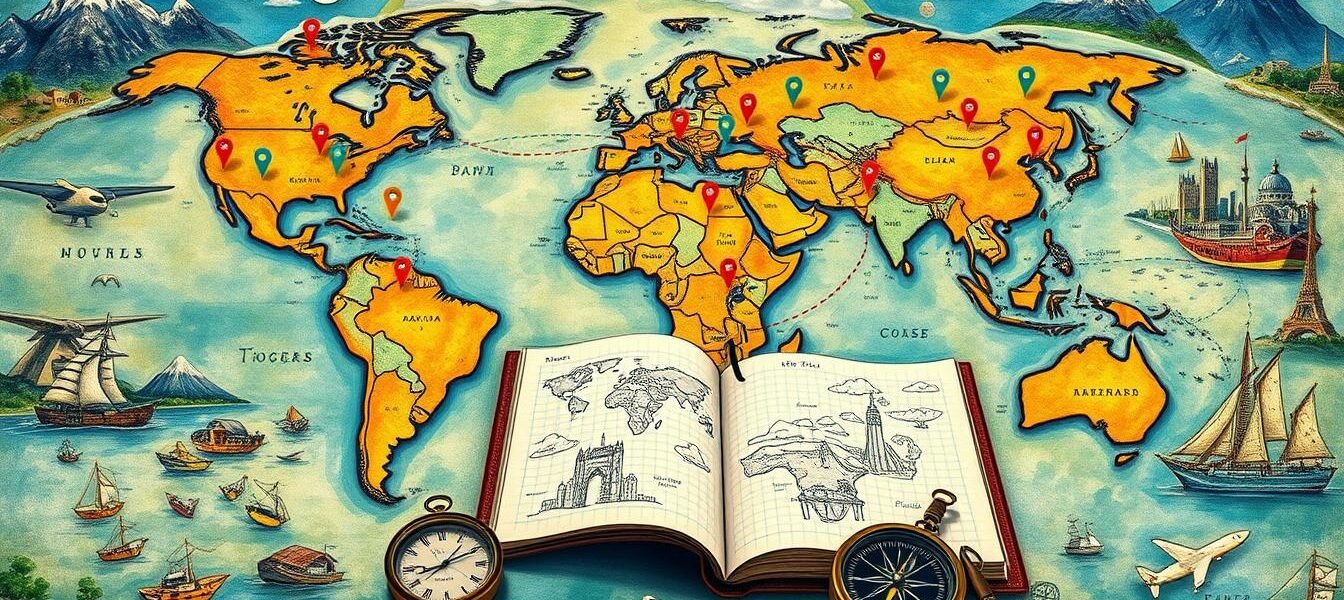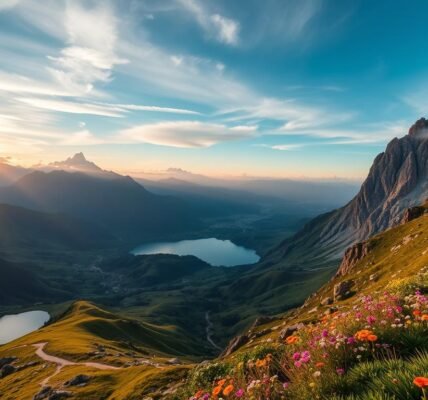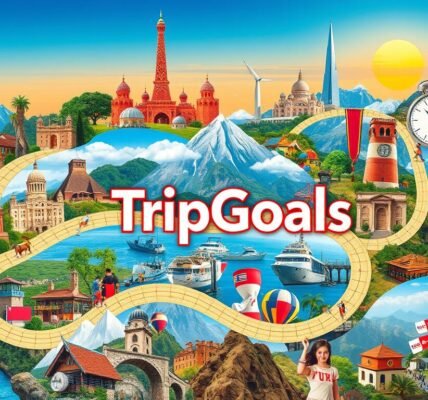Ever thought about taking a year-long trip that could change your life? It might seem daunting, but it can also be incredibly rewarding. To make your global travel plans a success, I’ve found key steps to help you.
First, understand why you want to travel. Then, set a clear timeline for your journey. Choose places that excite you and plan your budget carefully. Lastly, be ready for any surprises that come your way.
This guide will make sure your trip is not just unforgettable but also well-organized. Get ready for an adventure that will leave you with amazing memories.
Key Takeaways
- Identify your motivations to drive your travel experiences.
- Establish a timeline to effectively manage your travels.
- Research and select diverse destinations to enrich your adventure.
- Budget for both planned expenses and unexpected costs.
- Prepare essential documents and insurance for a safe journey.
- Integrate local transportation options in your travel arrangements.
Understanding the Motivation Behind Your Year-Long Travel Adventure
Knowing why I want to travel for a year is key to planning my trip. Many people, like Sherry, start with short trips and then decide to travel full-time1. They want to learn about new cultures and find their own path, just like I do.
Traveling long-term makes people rethink their retirement plans. They choose to explore the world instead of just saving money for later2. Families even use travel as a way to keep learning, showing that education can happen anywhere2.
This trip is about more than just seeing places. It’s about the experiences and changes I’ll go through. Thinking about what I want to get from my travels helps me make better choices. This personal drive makes my journey even more rewarding.
Setting the Timeline for Your Extended Travel Itinerary
Creating a detailed timeline for my year-long trip is crucial. I need to figure out how long I’ll be traveling, considering work, family, or personal needs. By planning my extended travel itinerary, I can spend the right amount of time at each place. This ensures my journey flows smoothly.
Planning a world trip usually takes months to a year or more. My plan might include visiting about 15 countries, averaging 1.25 countries per month3. I’ll focus on my top destinations within this plan.
It’s also important to plan the stages before I leave. For example, I should research visas six months to four months before I go4. Within four months to three months, I’ll get no-fee international credit cards for travel costs4. Between three months and one month before, I’ll gather all the supplies and clothes I need4.
As the departure date gets closer, imagining my daily experiences in each place helps me prepare4. On the last day, I’ll check my packing to make sure it fits airline rules4. Eating well and staying hydrated will also help me avoid jet lag4.
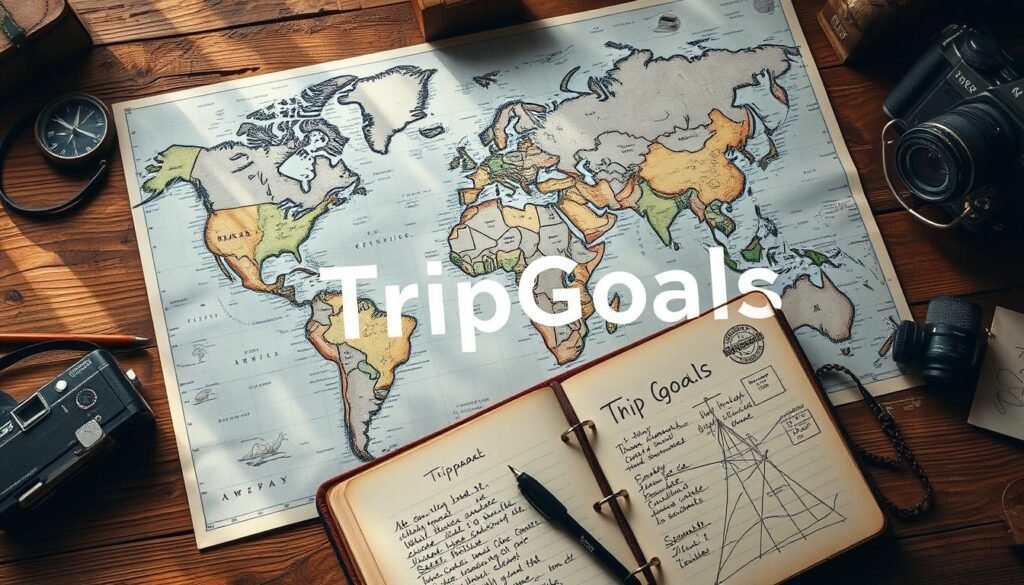
Developing Year-Long Travel Plans: What Destinations to Include
Starting a year-long travel plan means doing lots of research. I look at culture, geography, and activities in each place. It’s important to pick places that match my interests and love for adventure.
Researching Long-Term Travel Destinations
I’m looking into many exciting places around the world. I might visit Australia, New Zealand, and parts of Southeast Asia. These places offer stunning views and are easy on the wallet5. Europe is also a great choice because of its good connections and English speakers5.
Considering Cultural Experiences and Activities
It’s key to add cultural experiences to my travel plans. I want to join local festivals, go on food tours, and see historical sites. For instance, celebrating Holi in India or checking out local crafts in Southeast Asia could be unforgettable6. My goal is to make sure my travels are full of cultural moments that I’ll always remember.
Budgeting for Your Year-Long Adventure
Effective budgeting is key for my year-long travel. Knowing how to budget for travel helps me plan for all costs. This includes flights, places to stay, food, activities, and personal expenses. A solid financial plan reduces stress and lets me enjoy my travels more.
Understanding Extended Travel Budgeting
For a long trip, setting a budget is a good start. A trip around the world for one person might cost about $20,000, or $50 a day7. With a minimal budget, staying in one area and taking longer breaks can cost around $12,0007.
For a more extensive journey, a budget of $25,000 could work, with daily costs around $757. A mid-range budget of $32,000 offers a bit more comfort7. Apps like Nomad List and TravelSpend help track spending in different countries8.
Allocating Funds for Emergencies and Unexpected Costs
It’s important to save for unexpected expenses. Experts recommend setting aside 20% of your budget for emergencies8. For example, a budget of $16,000 could cover a year in cheaper countries, while high-income countries might require at least $33,0009.
To manage my money, I use budgeting apps and set daily or weekly spending limits8. This way, I can handle unexpected costs without ruining my travel plans.
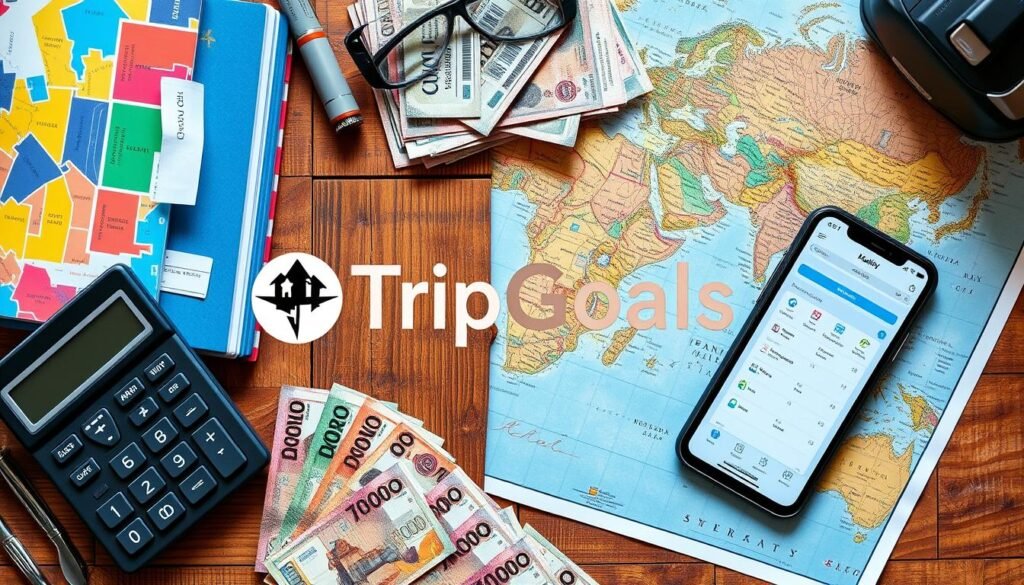
Creating an Itinerary for Extended Travel
When planning a travel itinerary for one year, I focus on detailed itinerary planning. A good plan organizes my trips and leaves room for spontaneity. Grouping places close together saves time and money.
Each part of my trip has clear goals based on what I want to do. Studies show setting goals is key for managing resources10. Choosing places to visit is based on budget, interests, and safety10. Where I stay also affects my trip, whether it’s a hotel, apartment, or vacation rental10.
To plan my itinerary, I might use templates or services. This helps me stay organized and not miss out on anything important. Knowing the best times to visit and the weather helps avoid crowds and high costs11. Having all my documents ready is also important to avoid last-minute problems10.
I make sure my itinerary includes activities I’ll enjoy, making my long stay interesting10. Checking if I can get the things I need in my destination is crucial, especially for digital nomads10. With a well-planned itinerary, I’m ready for exciting adventures on my journey.
| Key Element | Details |
|---|---|
| Destinations | Group by proximity to save travel time and costs. |
| Goals | Set clear objectives to prioritize activities. |
| Research | Consider interests, budget, and safety in selecting destinations. |
| Accommodation | Decide between hotels, vacation rentals, or serviced apartments. |
| Essential Documents | Verify visas, insurance, and health certificates before departure. |
Deciding Travel Mode: Rethinking Transportation Options
Planning a year-long trip means carefully choosing how to get around. Each travel option has its own good and bad points. Knowing these can help shape my trip plan, making it crucial to think things through.
Weighing the Pros and Cons of Each Transportation Method
Transport options vary in cost, comfort, and ease. Air travel is quick but pricey. Trains and buses are cheaper, great for getting around locally. My choice affects how happy I’ll be on the trip12.
My attitude towards each mode also matters for my trip satisfaction12.
Taking into Account Local Transportation in Each Destination
Local transport is key once I arrive. Options like public transit, bike rentals, and ride-sharing vary in cost and experience. Adding these to my plan makes my travel better. My social status can influence which transport I use13.
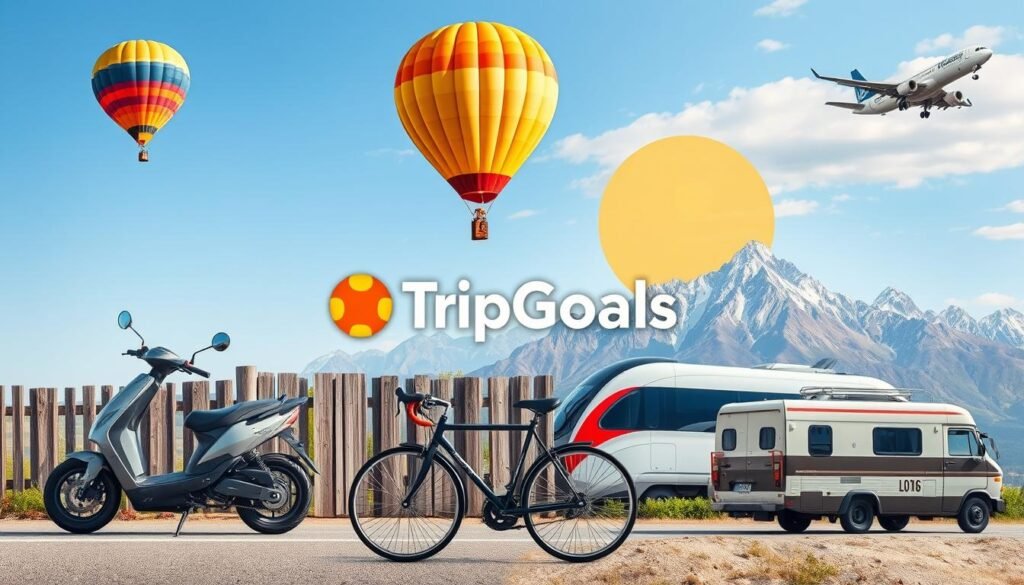
| Transportation Mode | Cost | Comfort Level | Convenience |
|---|---|---|---|
| Air Travel | High | Moderate | High |
| Train | Moderate | High | Moderate |
| Bus | Low | Low | Moderate |
| Car Rental | Variable | High | High |
By looking at these points and local transport, my trip will be fun and affordable for a year12.
Packing Essentials for a Year of Exploration
When planning a year-long trip, picking the right items is key. You need to choose items that work in different climates and for different activities. Making a detailed checklist helps keep your packing organized and your luggage light. It’s easy to forget important items like versatile clothes and personal essentials.
Year-Long Travel Essentials
My list includes clothes, toiletries, medications, tech, and more. For clothes, I pack:
- 5 short sleeve shirts
- 2 pairs of shorts
- 2 long sleeve shirts
- 2 pairs of long pants
- 7 pairs of socks
- 7 pairs of underwear
- 1 lightweight fleece
- 1 rain jacket
- Additional items like pajamas, swimsuit, hat, scarves, and undergarments
For toiletries, I carry only the basics like shampoo, soap, and a travel toothbrush. Many products can be bought where I go14. Medications are also important. I pack Epi-Pens, Benadryl, and Pepto Bismol, as they might be hard to find15.
Tips for Packing Light on Extended Vacations
To pack light, I aim for a backpack weight of 8-10kg, max 12kg14. I use packing cubes and compress clothes to save space and reduce wrinkles. After a month, sending non-essential items home can lighten my load14.
I choose multi-purpose items whenever I can. I carefully pack electronics like my laptop and Kindle, backing them up and insuring them for safety. By packing smart and staying organized, my year-long journey stays exciting and manageable.
For a detailed guide on packing, check out this packing guide. It covers all you need for a year of travel1514.
Preparing Important Documents and Travel Insurance
Before starting my year-long travel, I need to make sure all important travel documents are ready. I must have a valid passport with at least six months left before it expires, as most countries require16. I also need to check if I need a visa before I go or if I can get one when I arrive16. Some places even ask for a blank page for stamps or visas16.
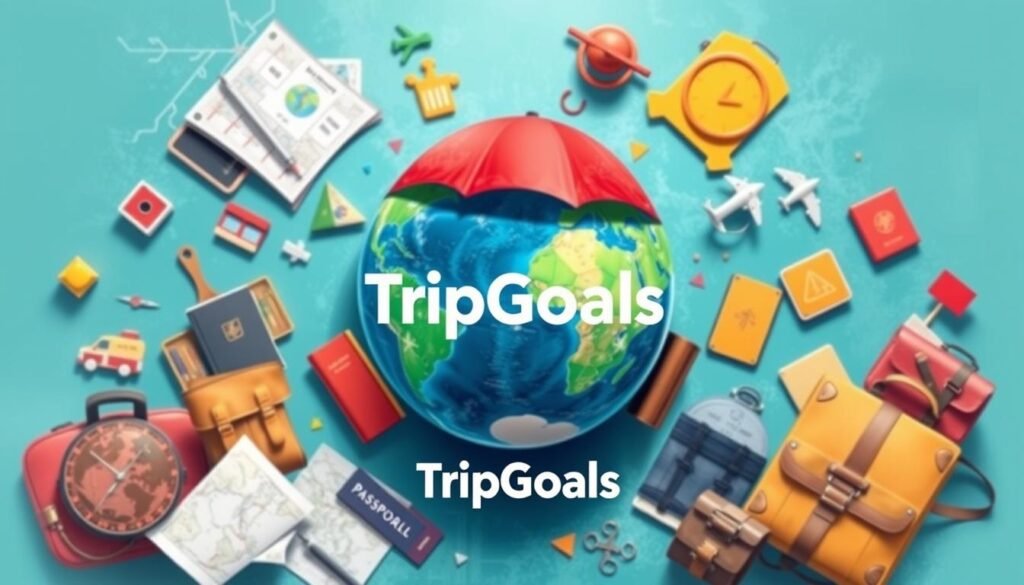
Getting my documents in order will help me feel less stressed. It will also make crossing borders easier. I should think about getting an international driving permit, even if it’s not needed everywhere16. It’s also smart to have copies of my passport and driver’s license16.
Travel insurance is key for unexpected problems. It should cover medical emergencies, trip cancellations, and lost items17. Travel insurance plans usually have 30 to 60 pages, so it’s important to know what’s covered17. With COVID-19 still affecting travel, I might need to show vaccination proof or a negative test, along with my insurance17.
By taking care of these important travel documents and getting the right insurance, I can enjoy my journey without worrying about paperwork.
Choosing the Right Accommodation: Long-Term Stay Options
Finding the right place to stay is key to enjoying my travels. I have many choices, like long-term stays that make my trip more comfortable. Home exchanges and short-term rentals let me dive into local cultures while staying within my budget.
Exploring Home Exchange and Short-Term Rentals
Home exchange programs let me swap homes with travelers, giving me a real taste of a new place. Websites like Airbnb offer rooms, apartments, or houses for rent, often cheaper than hotels or hostels18. This flexibility is great for longer stays, where I can get better deals.
House-sitting is another option, letting me stay in homes worldwide for a small yearly fee18. While Couchsurfing used to offer free stays and cultural experiences, its shift to a for-profit model has changed its vibe18.
Budget-Friendly Accommodation Alternatives
Choosing budget-friendly stays can save me money, letting me spend more on experiences. Hostels have kitchens and common areas, making it easy to meet other travelers and save on food18.
The Long Term Lodging (LTL) program is perfect for stays of 30 nights or more, with over 350 properties for federal travelers19. It offers big discounts and fewer cancellation fees, making travel more affordable. Extended stay hotels and serviced apartments mix hotel comfort with long-term living, making them a smart choice20.
Understanding Visa Requirements and Entry Regulations
Before starting my year-long travel, I need to know the visa requirements for long-term travel in each place. Some countries need specific visas before you go, while others might let you in without one for a short time. It’s important to know the travel entry regulations to avoid trouble and make my trip smooth.
In the U.S., people aged 14-79 usually need to go to an interview for a visa, unless it’s a renewal21. Getting a visa involves giving biometric data and paying fees, among other things22.
Learning about understanding international travel forms is crucial. My passport must be valid for at least six months after my U.S. visit, unless I’m exempt21. Also, my passport can’t be voided for not leaving on time, or my visa might be cancelled21.
Knowing the different visas for long-term stays is also important. For example, tourist visas are for short stays, while working holiday visas last a year or two23. Student visas can last from one to four years, depending on the course23. This helps me choose the right visa for each part of my trip.
By doing my homework, I can figure out what documents I need. I must check visa regulations for each place to get all the right papers. This way, I can prepare well and make my year abroad memorable.
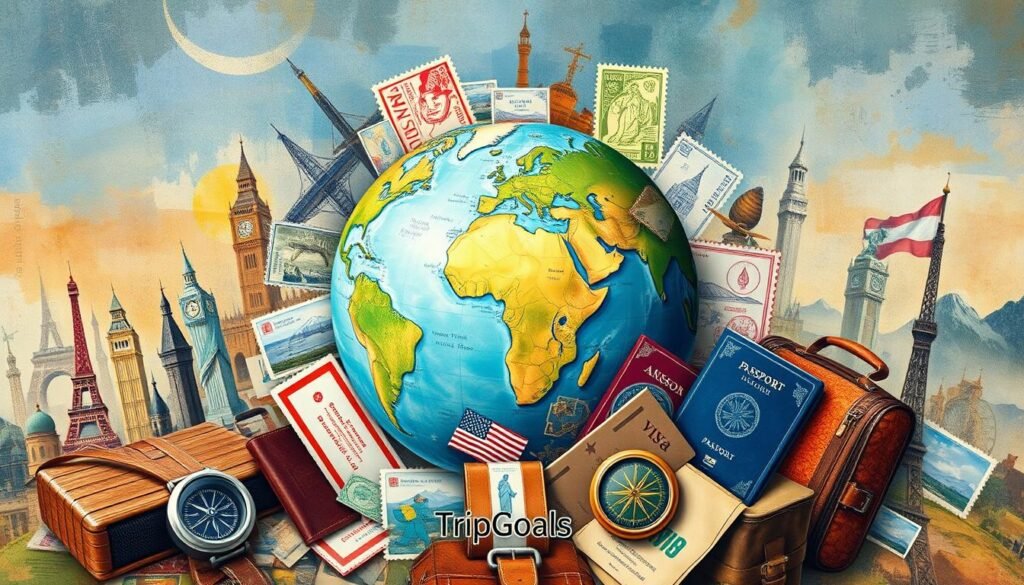
Health and Safety Considerations for Extended Travel
Keeping myself safe and healthy is key when I travel for a long time. I need to prepare well and know how to handle emergencies. This makes my trip smooth and safe.
Essential Health Precautions Abroad
I start by getting the right vaccinations for my destinations. This is a big part of staying healthy while traveling. I also make sure to wash my hands often to avoid getting sick.
About one third of travelers to certain places get traveler’s diarrhea. This is often caused by germs in food and water24. Knowing about local health issues helps me stay safe24.
Emergency Contact Information and Resources
It’s important to have emergency contacts and medical info ready. Knowing how to call for help is crucial for my safety. I also check the Overseas Security Advisory Council for safety tips25.
Having U.S. embassy contact info helps in case of lost passports or emergencies25. I also try to stay in safer places, like rooms not on the ground floor25.
Thinking ahead about health and safety makes my trip better. It helps me deal with any surprises that come up. By focusing on my safety, I can enjoy my travels more.
| Health Precautions | Details |
|---|---|
| Vaccinations | Obtain necessary vaccinations for specific destinations. |
| Hygiene | Maintain good hygiene to lower illness risks. |
| Local Health Awareness | Understand health threats like high-altitude sickness and waterborne infections. |
| Emergency Contacts | Designate contacts and store medical information. |
| Embassy Resources | Keep U.S. embassy contact details handy for emergencies. |
| Accommodation Safety | Avoid ground floor accommodations for enhanced safety. |
Connecting with Other Travelers and Local Communities
Traveling has become more meaningful with community connections. I look for ways to meet other travelers and locals. Couchsurfing is great for finding free places to stay and making friends, even with its recent changes26.
The sharing economy helps tourists and locals connect. It offers affordable ways to experience different cultures26.
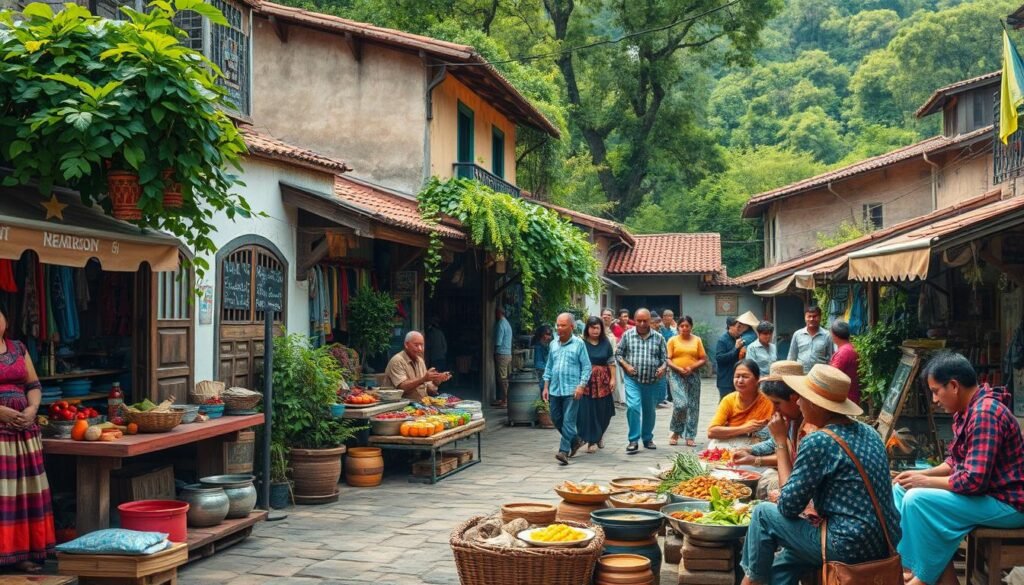
Meetup.com helps me find events that interest me. It’s a great way to meet people with similar hobbies26. Language exchanges in big cities let me connect with locals and learn about their culture26.
Bumble BFF is also useful for finding travel buddies. It makes exploring new places easier26.
Homestays offer a deep dive into local life. Staying with families gives me a unique view of their daily routines27. These experiences often lead to lasting friendships, making me feel at home abroad27.
Using local guides through services like vayable.com adds to my travel joy. They share cultural insights and show me hidden spots27.
My travels have introduced me to many people from different places. These encounters have broadened my world view28. Keeping these connections alive shows me the beauty of shared human experiences. It helps me grow and see life from new angles28.
Keeping Your Finances in Check During Your Journey
Managing money on the go needs careful planning. A good checking account for international travel makes it easier. Look for one with no foreign transaction fees to save money. A study found 85% of travelers check with their bank before traveling to avoid extra fees29.
Setting Up a Checking Account That Works Abroad
Before I leave, I make sure my account is ready for international use. Rick Steves suggests using cash for everyday costs in places that prefer it30. I carry two credit cards and check their expiration dates, a move 92% of travelers make29. To keep valuables safe, I use RFID-blocking wallets or money belts30.
Strategies for Managing Your Expenses Effectively
To stay within budget, I track my spending with apps or a journal. 64% of travelers find online banking key for keeping an eye on their money29. I split my cash to avoid theft, using hotel safes and unexpected spots for storage30. Choosing ATMs inside banks for withdrawals is safer, reducing theft risk30
| Expense Tracking Method | Effectiveness Rating |
|---|---|
| Budgeting Apps | High |
| Manual Travel Journal | Moderate |
| Online Banking | High |
| Spreadsheet Tracking | High |
| Cash Envelope System | Moderate |
Preparing for Cultural Adaptation During Your Travels
Getting ready for cultural adaptation is key to a better travel experience. I aim to learn about the local customs, traditions, and etiquette in my destinations. Studies show that 87% of travelers who research their destination’s culture before arriving feel less culture shock31.
This preparation lets me connect with locals better and avoid misunderstandings. It’s a big help in making my trip more enjoyable.
To adjust well while traveling, I plan to dive into the host country’s community. This approach greatly reduces culture shock, especially for long-term travelers32. I’ll look for language exchange partners to overcome language barriers, which improves my experiences33.
Learning the local language also helps me make friends with the locals. A survey found that 65% of travelers find talking to someone who has visited the place before very helpful31. I want to meet other travelers or expatriates for their insights and advice.
Showing empathy towards the local culture is also important. Research shows that travelers who are empathetic are 70% more likely to make connections with locals31. I’ll keep a gratitude journal to reflect on my experiences. This can help me stay positive, even when facing culture shock symptoms like anxiety and disorientation32.
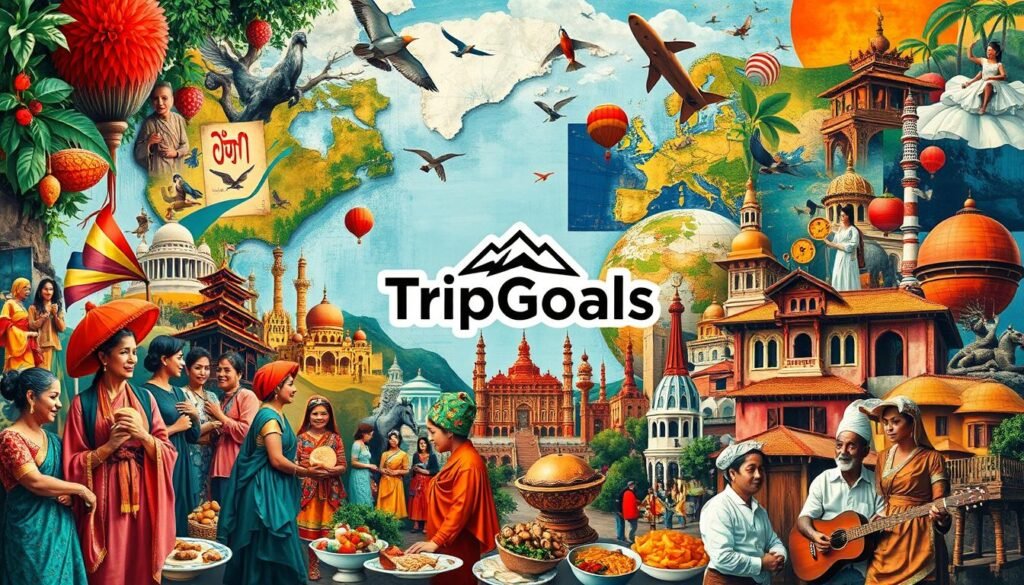
Conclusion
Thinking about my travel plans, I see how important it is to plan well for a year-long trip. Understanding my reasons, budgeting, and organizing are key steps. Each one helps me get ready for the exciting experiences that await34.
This journey will not only be about seeing new places but also about growing as a person. The hard work of planning will be worth it for all the growth I’ll experience.
When preparing for such a big adventure, being flexible is crucial. I have a plan, but I also want to be open to new experiences. This way, I can enjoy both my planned and unplanned moments35.
Traveling for a year is a great investment of time and money. It’s about overcoming challenges and enjoying different cultures. Every moment abroad is a chance to learn and make memories that will last forever.
For more tips and advice, I suggest checking out this resource. It will help me get ready for the amazing adventures that lie ahead.
FAQ
What are the key steps for planning a year-long travel adventure?
How do I identify my motivation for a year-long travel adventure?
How can I create an effective timeline for my travels?
What should I consider when selecting long-term travel destinations?
How do I budget for a year-long travel adventure?
What elements should be included in my extended travel itinerary?
What transportation methods should I consider for my travels?
What essentials should I pack for a year-long exploration?
How can I prepare important travel documents?
What accommodation options should I explore for long-term stays?
How can I understand visa requirements and entry regulations for my destinations?
What health and safety precautions should I take during extended travel?
How can I connect with other travelers and the local communities?
How can I manage my finances effectively during my travels?
What should I do to prepare for cultural adaptation while traveling?
Source Links
- https://www.transitionsabroad.com/listings/travel/articles/motivation-for-long-term-travel.shtml
- https://www.linkedin.com/pulse/i-took-year-off-travel-world-everyone-thought-crazy-dustin-finer
- https://alittleadrift.com/rtw-travel/world-travel-itinerary/
- https://airtreks.com/ready/airtreks-official-planning-timeline/
- https://www.gooverseas.com/blog/gap-year-travel-itinerary-ideas-by-region
- https://alittleadrift.com/rtw-travel/round-the-world-travel-route/
- https://alittleadrift.com/rtw-budget-travel-around-the-world/
- https://lifeexplore.medium.com/a-comprehensive-guide-to-planning-and-budgeting-for-long-term-travel-c2b033c0d125
- https://www.indietraveller.co/1-year-travel-cost/
- https://www.summithotels.ph/long-term-travel-guide-plan-long-stay-vacations
- https://www.trippedtravelgear.com/blog/2024-travel-planning-guide
- https://digitalcommons.usu.edu/cgi/viewcontent.cgi?article=4778&context=cee_facpub
- https://www.uvm.edu/sites/default/files/media/Incorporating_Long-distance_travel_into_transportation_planning_in_the_us.pdf
- https://thetravelersbuddy.com/your-definitive-packing-list-for-a-year-or-more/
- https://www.earthtrekkers.com/around-the-world-packing-list/
- https://www.journalofnomads.com/international-travel-checklist/
- https://www.insuremytrip.com/travel-advice/travel-planning/travel-documents-youll-want-to-remember-on-a-trip/
- https://www.bootsnall.com/rtw/accommodations.html
- https://www.gsa.gov/travel/plan-a-trip/lodging/long-term-lodging
- https://www.flatio.com/blog/a-comprehensive-guide-to-long-term-rentals-types-factors-to-consider-best-destinations-faqs
- https://travel.state.gov/content/travel/en/us-visas/tourism-visit/visitor.html/visa
- https://www.localyze.com/blog/what-is-a-visa-guide
- https://visaguide.world/
- https://uhs.princeton.edu/health-resources/travel-health-safety
- https://wwwnc.cdc.gov/travel/yellowbook/2024/environmental-hazards-risks/safety-and-security-overseas
- https://www.nomadicmatt.com/travel-blogs/the-truth-about-meeting-locals-abroad/
- https://themeticuloustraveler.com/the-value-of-locals-while-traveling/
- https://www.linkedin.com/pulse/power-connecting-people-when-traveling-home-emelie-fågelstedt
- https://bettermoneyhabits.bankofamerica.com/en/saving-budgeting/travel-checklist
- https://blog.kao.kendal.org/money-safety-tips-when-you-travel
- https://www.worldpackers.com/articles/ways-to-embrace-cultural-differences-while-traveling
- https://www.gooverseas.com/blog/how-to-deal-with-culture-shock-while-studying-abroad
- https://www.tbs-education.com/inspiring/how-to-adapt-to-a-new-cultural-environment-when-studying-abroad/
- http://www.fosteradventure.com/home/2015/8/18/conclusions
- https://fingertiptravels.com/how-long-should-you-travel-for/
